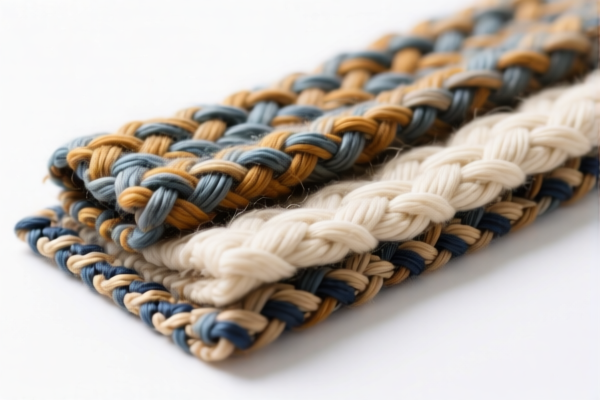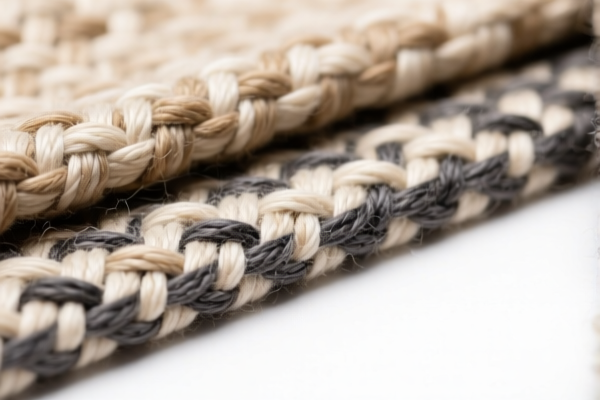| HS Code | Official Doc | Tariff Rate | Origin | Destination | Effective Date |
|---|---|---|---|---|---|
| 5516320520 | Doc | 80.0% | CN | US | 2025-05-12 |
| 5516330520 | Doc | 80.0% | CN | US | 2025-05-12 |
| 5407910520 | Doc | 80.0% | CN | US | 2025-05-12 |




Product Name: Woven fabrics of combed wool blended with conductive materials
Classification HS Code: Based on the provided data, the product may fall under the following HS codes:
🔍 HS CODE: 5516.32.05.20
Description: Woven fabrics of synthetic short staple fibers, containing less than 85% by weight of synthetic short staple fibers, mainly or solely blended with wool or fine animal hair, dyed, containing 36% or more by weight of wool or fine animal hair, combed.
- Base Tariff Rate: 25.0%
- Additional Tariff (General): 25.0%
- Special Tariff after April 11, 2025: 30.0%
- Total Tax Rate: 80.0%
- Notes:
- This code applies to fabrics with 36% or more wool or fine animal hair, and less than 85% synthetic short fibers.
- Ensure the material composition is clearly documented (e.g., exact percentages of wool and synthetic fibers).
- Certifications may be required for textile exports (e.g., origin, fiber content, etc.).
🔍 HS CODE: 5516.33.05.20
Description: Woven fabrics of synthetic short staple fibers, containing less than 85% by weight of synthetic short staple fibers, mainly or solely blended with wool or fine animal hair, containing 36% or more by weight of wool or fine animal hair, combed.
- Base Tariff Rate: 25.0%
- Additional Tariff (General): 25.0%
- Special Tariff after April 11, 2025: 30.0%
- Total Tax Rate: 80.0%
- Notes:
- Similar to 5516.32.05.20, but may apply to different types of synthetic fibers or processing methods.
- Confirm the type of synthetic fiber used (e.g., polyester, nylon) to ensure correct classification.
- Documentation of fiber composition and processing is essential for customs clearance.
🔍 HS CODE: 5407.91.05.20
Description: Woven fabrics of synthetic filament, blended with wool or fine animal hair, containing 36% or more by weight of wool or fine animal hair, combed.
- Base Tariff Rate: 25.0%
- Additional Tariff (General): 25.0%
- Special Tariff after April 11, 2025: 30.0%
- Total Tax Rate: 80.0%
- Notes:
- This code applies to synthetic filament (e.g., polyester, nylon) blended with 36% or more wool.
- Conductive materials (if present) may affect classification or require special documentation.
- Ensure fiber type and blending ratio are clearly stated in the product description.
⚠️ Important Alerts:
- April 11, 2025 Special Tariff: A 30% additional tariff will be applied to all three codes after April 11, 2025.
- Anti-dumping duties: Not applicable for textile products unless specifically imposed.
- Conductive materials: If the fabric contains conductive materials (e.g., carbon, silver), it may fall under a different classification or require special permits.
- Certifications: Verify if textile certifications (e.g., origin, fiber content, sustainability) are required for export or import.
✅ Proactive Advice:
- Verify the exact composition of the fabric (e.g., wool percentage, type of synthetic fiber, and presence of conductive materials).
- Check the unit price and total value to determine if any preferential tariffs apply.
- Consult a customs broker or HS code expert if the product contains non-standard materials or special treatments.
- Update documentation regularly to reflect any changes in tariff policies or regulatory requirements.
Let me know if you need help with certification requirements or customs documentation for this product.
Product Name: Woven fabrics of combed wool blended with conductive materials
Classification HS Code: Based on the provided data, the product may fall under the following HS codes:
🔍 HS CODE: 5516.32.05.20
Description: Woven fabrics of synthetic short staple fibers, containing less than 85% by weight of synthetic short staple fibers, mainly or solely blended with wool or fine animal hair, dyed, containing 36% or more by weight of wool or fine animal hair, combed.
- Base Tariff Rate: 25.0%
- Additional Tariff (General): 25.0%
- Special Tariff after April 11, 2025: 30.0%
- Total Tax Rate: 80.0%
- Notes:
- This code applies to fabrics with 36% or more wool or fine animal hair, and less than 85% synthetic short fibers.
- Ensure the material composition is clearly documented (e.g., exact percentages of wool and synthetic fibers).
- Certifications may be required for textile exports (e.g., origin, fiber content, etc.).
🔍 HS CODE: 5516.33.05.20
Description: Woven fabrics of synthetic short staple fibers, containing less than 85% by weight of synthetic short staple fibers, mainly or solely blended with wool or fine animal hair, containing 36% or more by weight of wool or fine animal hair, combed.
- Base Tariff Rate: 25.0%
- Additional Tariff (General): 25.0%
- Special Tariff after April 11, 2025: 30.0%
- Total Tax Rate: 80.0%
- Notes:
- Similar to 5516.32.05.20, but may apply to different types of synthetic fibers or processing methods.
- Confirm the type of synthetic fiber used (e.g., polyester, nylon) to ensure correct classification.
- Documentation of fiber composition and processing is essential for customs clearance.
🔍 HS CODE: 5407.91.05.20
Description: Woven fabrics of synthetic filament, blended with wool or fine animal hair, containing 36% or more by weight of wool or fine animal hair, combed.
- Base Tariff Rate: 25.0%
- Additional Tariff (General): 25.0%
- Special Tariff after April 11, 2025: 30.0%
- Total Tax Rate: 80.0%
- Notes:
- This code applies to synthetic filament (e.g., polyester, nylon) blended with 36% or more wool.
- Conductive materials (if present) may affect classification or require special documentation.
- Ensure fiber type and blending ratio are clearly stated in the product description.
⚠️ Important Alerts:
- April 11, 2025 Special Tariff: A 30% additional tariff will be applied to all three codes after April 11, 2025.
- Anti-dumping duties: Not applicable for textile products unless specifically imposed.
- Conductive materials: If the fabric contains conductive materials (e.g., carbon, silver), it may fall under a different classification or require special permits.
- Certifications: Verify if textile certifications (e.g., origin, fiber content, sustainability) are required for export or import.
✅ Proactive Advice:
- Verify the exact composition of the fabric (e.g., wool percentage, type of synthetic fiber, and presence of conductive materials).
- Check the unit price and total value to determine if any preferential tariffs apply.
- Consult a customs broker or HS code expert if the product contains non-standard materials or special treatments.
- Update documentation regularly to reflect any changes in tariff policies or regulatory requirements.
Let me know if you need help with certification requirements or customs documentation for this product.
Customer Reviews
No reviews yet.